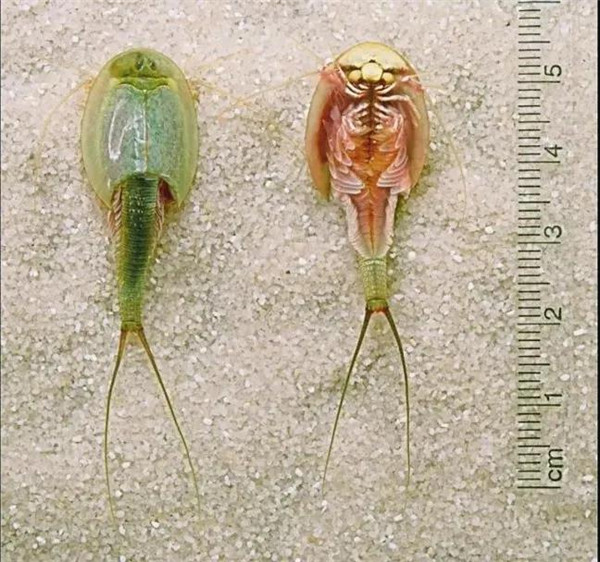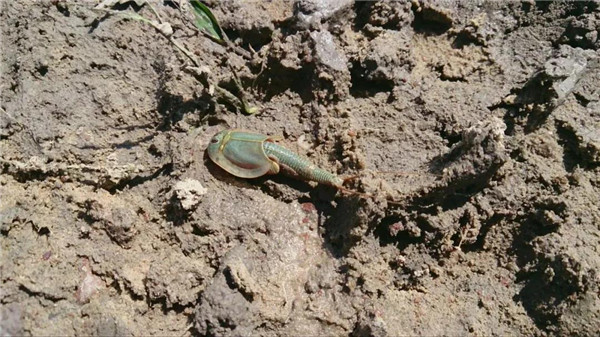'Ancient' creature found in Gansu
A tadpole shrimp, a species sometimes described as a "living fossil", was recently discovered by a villager on his farmland in Gaotai county, Zhangye city, Northwest China’s Gansu province.

A villager shows the site where he found the ancient creature.
“The ancient creature appeared in the Permian about 200 million years ago, so it outlived the dinosaurs,” said Qin Yong, a senior engineer from the provincial fishery technology promotion station after conducting on-site identification with local fishery experts.

Fishery experts take a look at the creature in Yuanxing village, Gaotai county, Zhangye city.
The creature, about five to six centimeters in length, has a large shell on its head and antennas with a red belly covered with limbs. It also looks like a cricket.
"It is also known as three-eyed dinosaur shrimp, because it has three eyes; black compound eyes on both sides, and a white light-sensitive eye in the middle. It was called dinosaur shrimp, because it did not disappear after the extinction of the dinosaurs, and now it is very rare," Qin noted.

The top and underside of the ancient creature
It is a large branchiopod crustacean which lives in intermittent waters with good water quality, Qin said, adding that it is regarded as the oldest creature on earth and is known as a "living fossil".
“Its eggs are dormant, not afraid of drought," Qin said. "They can be dormant underground for about 25 years. When the conditions are favorable, they will stop dormancy and hatch into larvae. Most of them appear in wetlands, depressions and pools, and they are harmless to crops."

A tadpole shrimp is found on farmland.
It does not bite people, and is non-toxic. It can also remove weeds in the field. In some countries, farmers use it as a substitute for pesticides in rice fields.
Chen Wenjian, a local fishery expert, said the creature has not been found in the county for more than 20 years, and its reappearance indicates that the quality of the water and soil has been improved.
-
As AI encounters Dunhuang's art, the ancient caisson ceiling bridges centuries to the present.
View all stories

 Gansu thrives from green development
Gansu thrives from green development  >
>